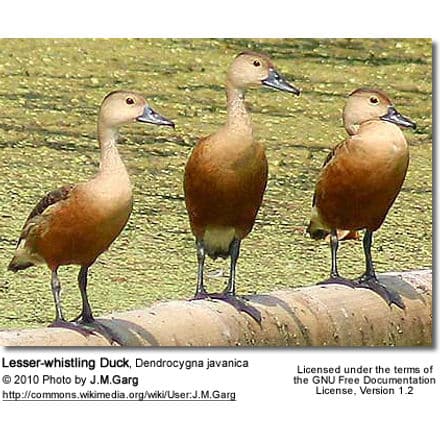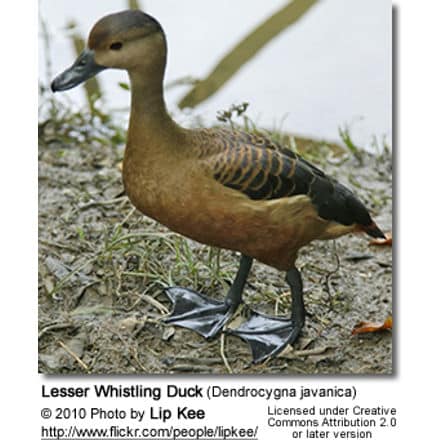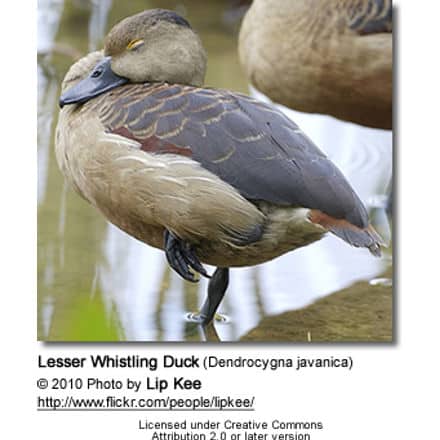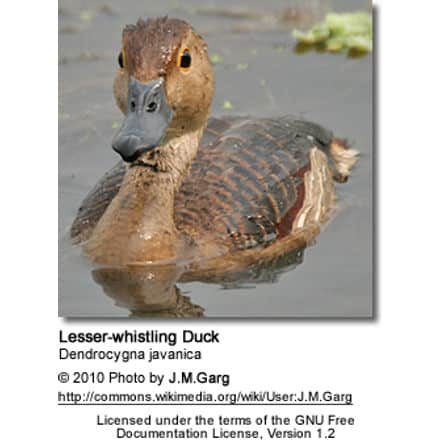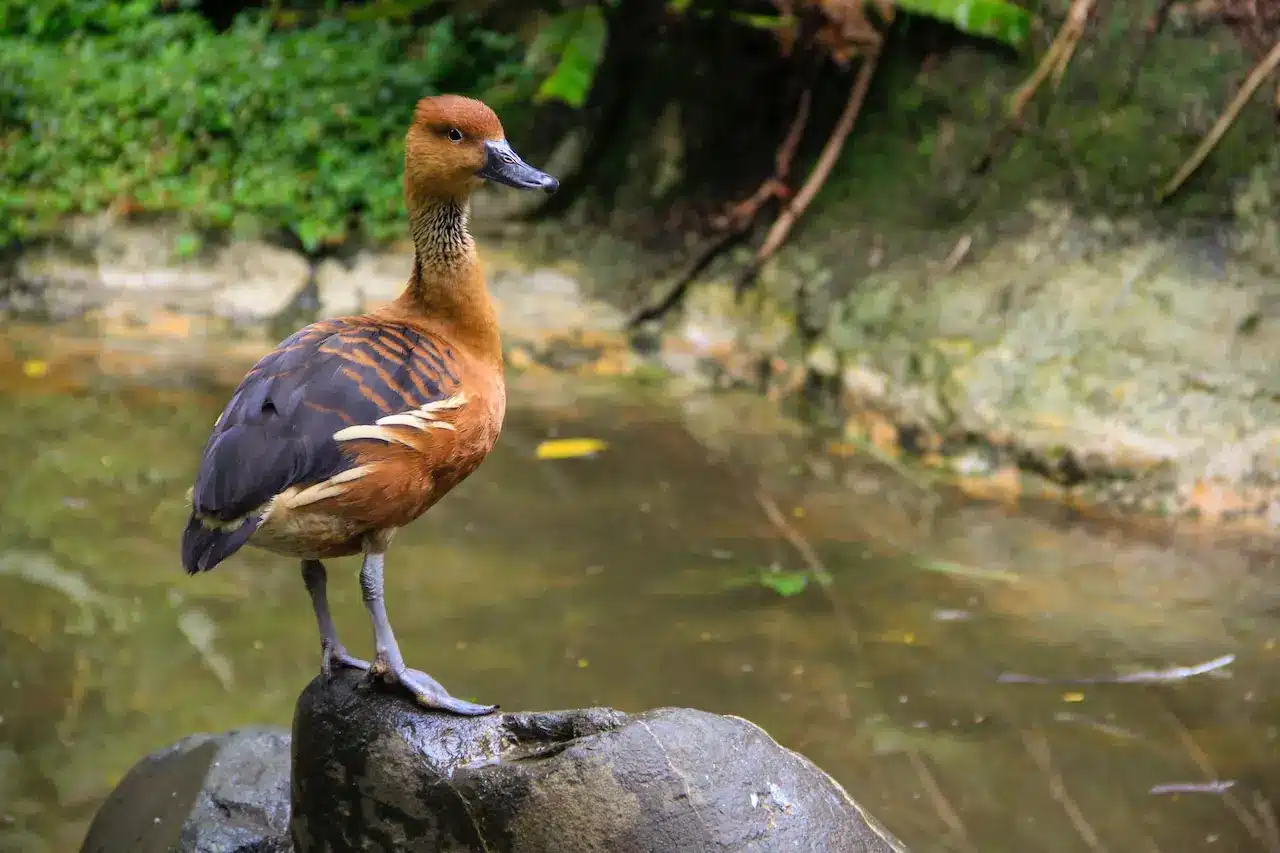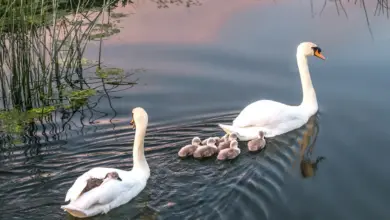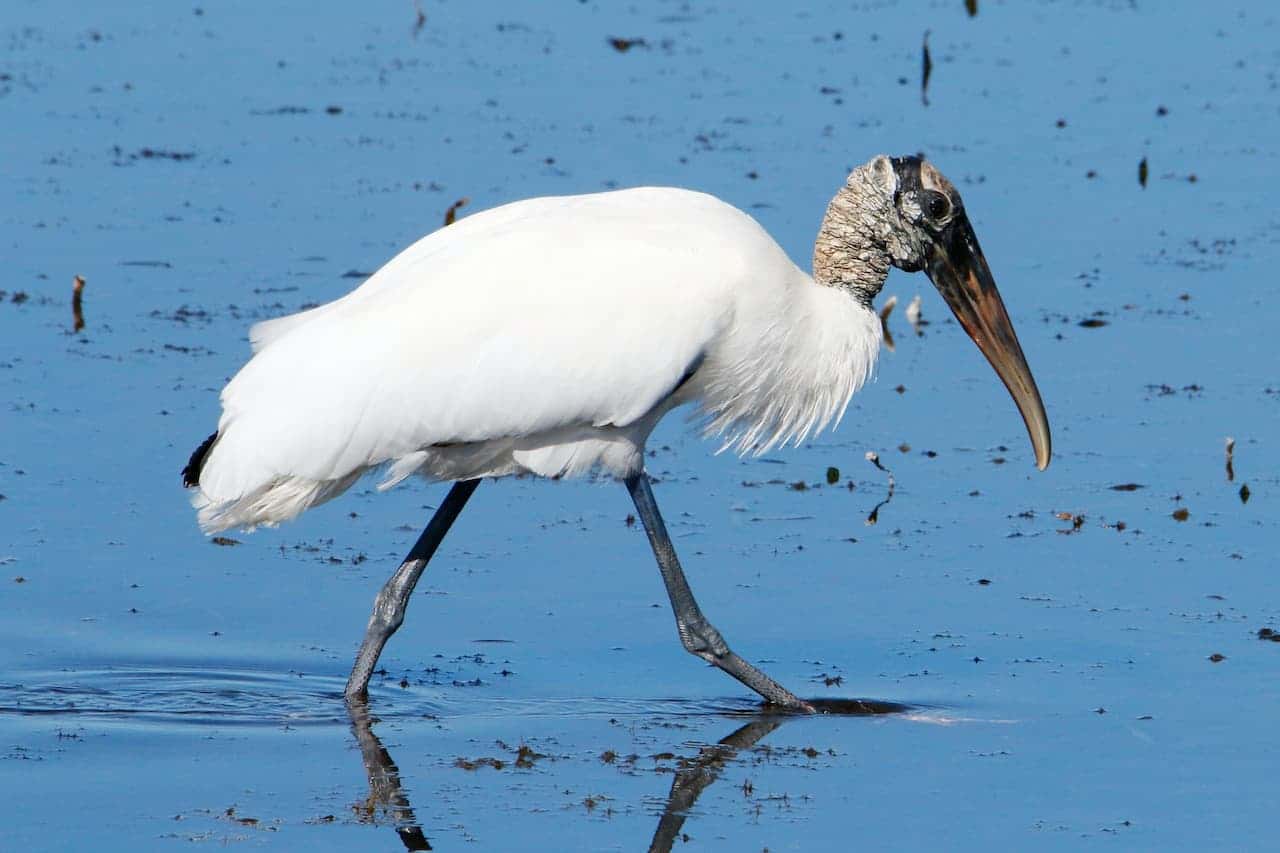Lesser Whistling Ducks or Indian Whistling Duck
The Lesser Whistling Ducks Dendrocygna javanica, also known as Indian Whistling Duck or Javan Whistling Duck, is a small whistling duck that breeds in South Asia and Southeast Asia.
It may also be called the Lesser Whistling Teal (based on an older classification), or the Tree Duck.
Distribution
This is a largely resident species distributed unevenly from the Pakistan lower river valleys eastwards across most of peninsular India, Nepal terai, Sri Lanka, Bangladesh, Burma, Thailand, Malaysia, Indonesia, south China, to Vietnam. It is largely resident, apart from local movements (often induced by drought or floods), but Chinese birds winter further south.
Covering between 1 to 10 million km², it is estimated to have a global population of between two and twenty million individuals.
Habitat
still freshwater lakes, with plentiful vegetation, where this duck feeds on seeds and other vegetation. Occasionally seeks refuge in the ocean just outside the surf area.
May be seen often perching on trees near water bodies, giving rise to the alternate name Tree Duck.
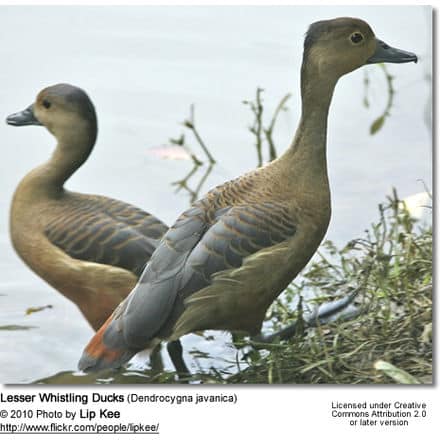
Description
This species has a long grey bill, long head, and longish legs. It has a buff head, neck, and underparts, and a darker crown. The back and wings are darkish grey, and there are chestnut patches on the wings and tail. All plumages are similar.
This species is gregarious, and at favored sites, such as Carambolin Lake in India, the flocks of a thousand or more birds arriving at dawn are an impressive sight.
Call / Vocalization:
The call is a wheezy, whistling “seasick, seasick“, call, uttered in flight. Roosts can be quite noisy.
Nesting
It nests in tree holes, old nests of other birds, or on a stick platform near the ground, and lays 6-12 eggs.
References
- BirdLife International (2004). Dendrocygna javanica. 2006. IUCN Red List of Threatened Species. IUCN 2006. Retrieved on 11 May 2006. justification for least concern: global population of between two and twenty million individuals (Wetlands International 2002).
- Grewal, Bikram; Bill Harvey and Otto Pfister (2002). Photographic guide to birds of India. Periplus Editions / Princeton University Press. p. 58
- Ali, Salim; Sidney Dillon Ripley (1986/2001). Handbook of the Birds of India and Pakistan, 2nd ed.,10 vols (2nd ed.). Oxford University Press. Bird Number 138, vol. 1, p. 138-140.
Other References
- Wildfowl by Madge and Burn, ISBN 0-7470-2201-1
- Birds of Goa (video)
Relevant Resources
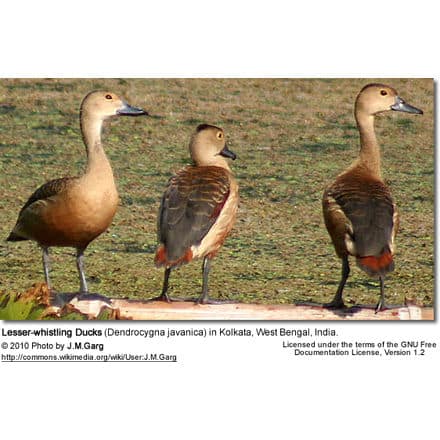

Diet / Feeding:
Ducks generally feed on larvae and pupae often found under rocks, as well as aquatic animals, plant material, seeds, small fish, snails, and crabs.

